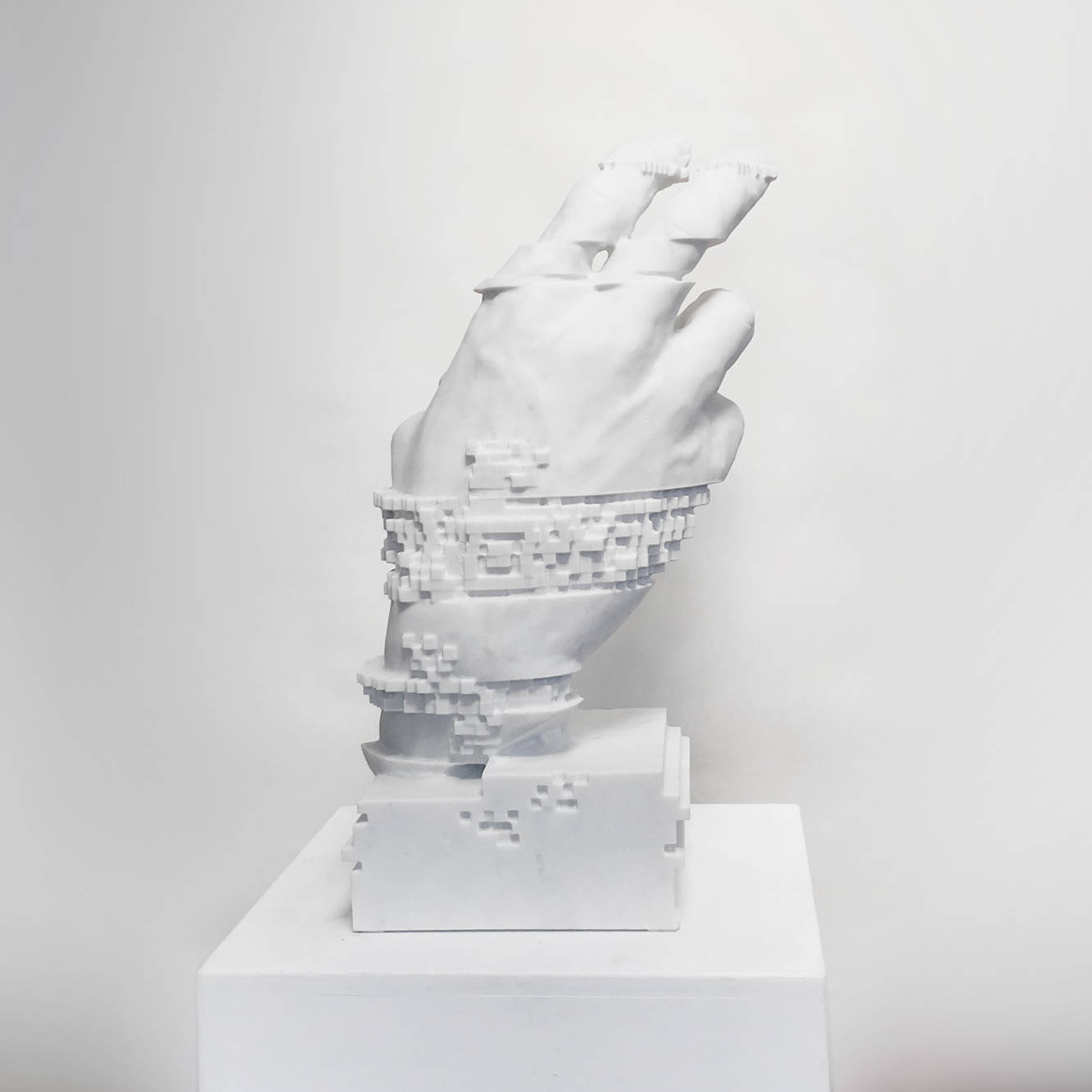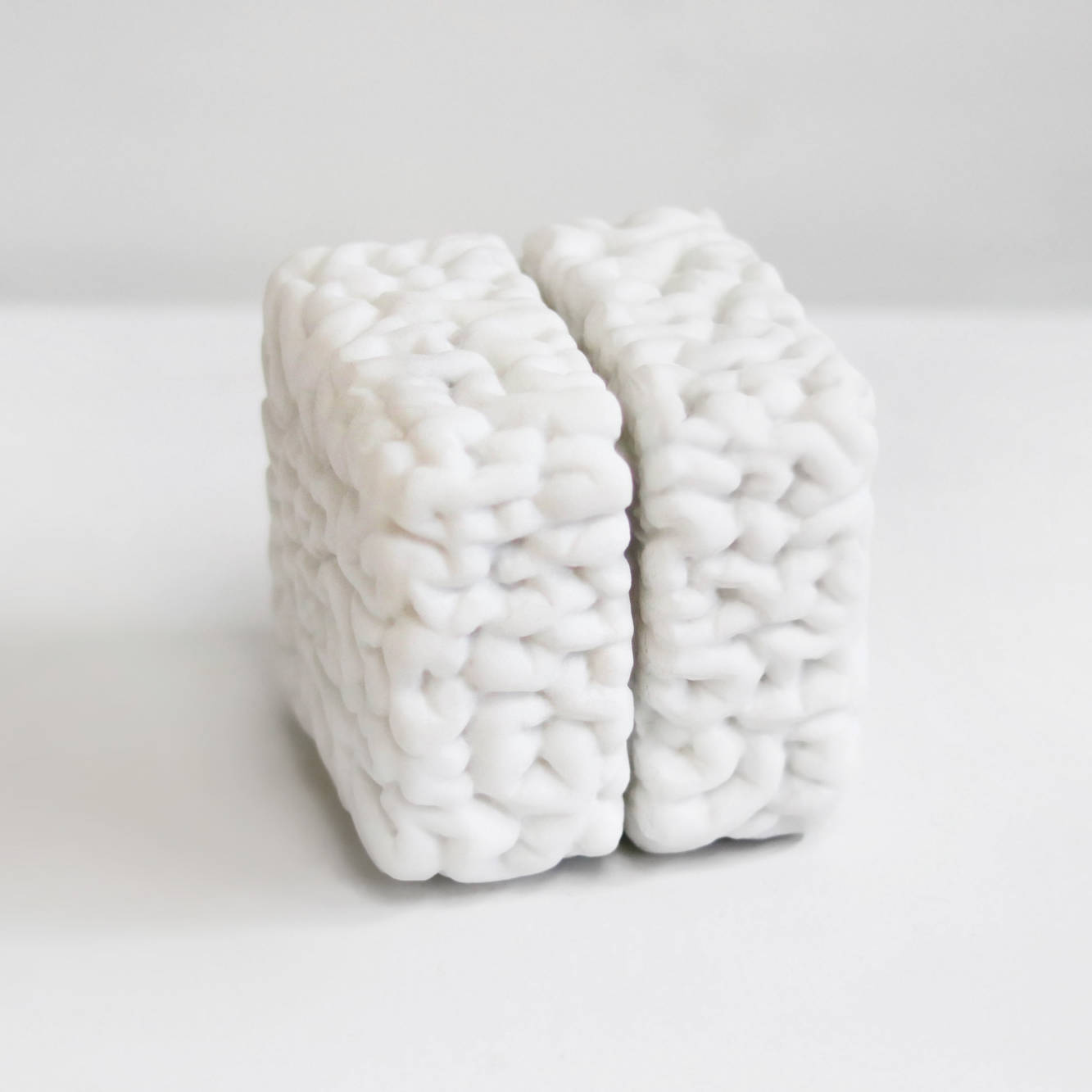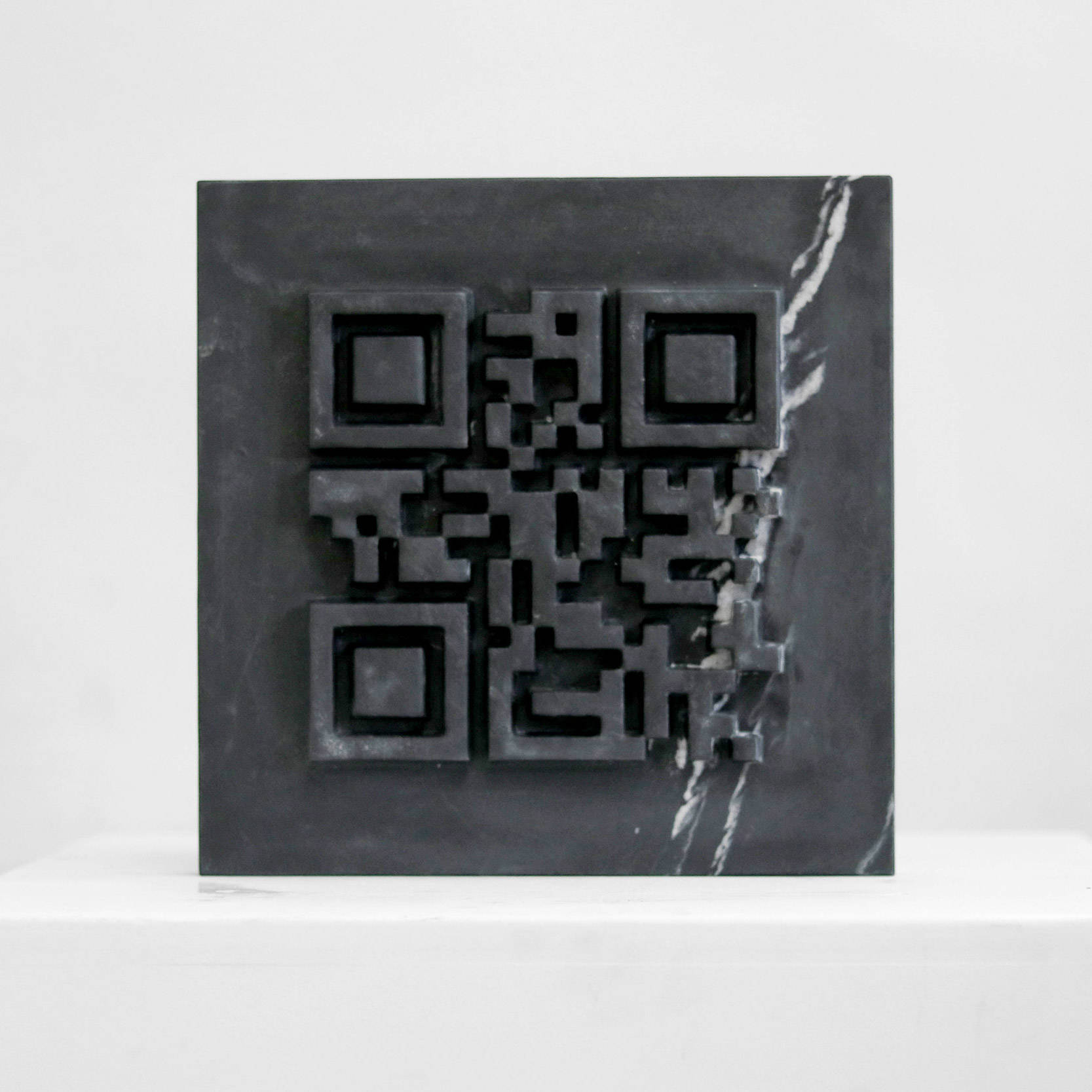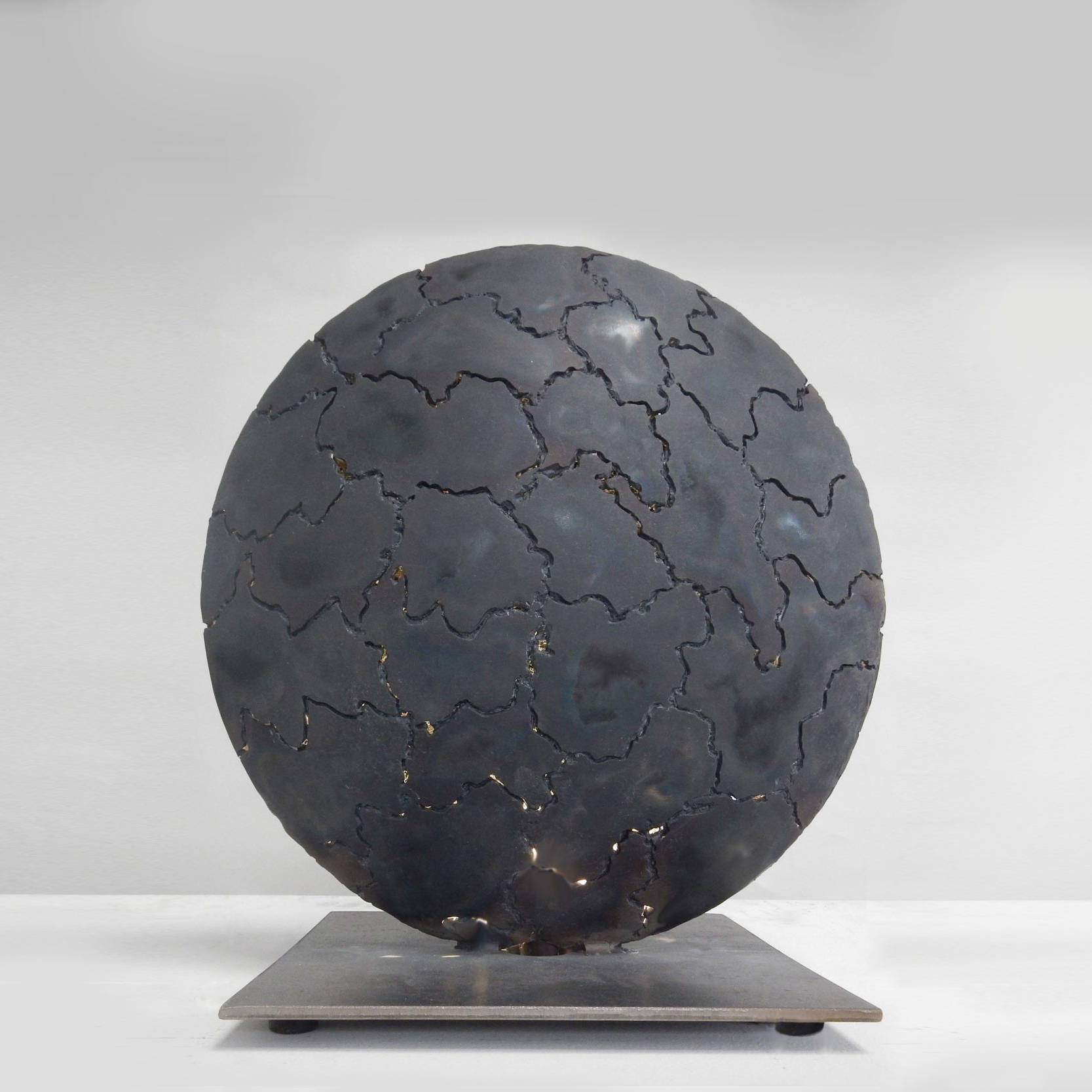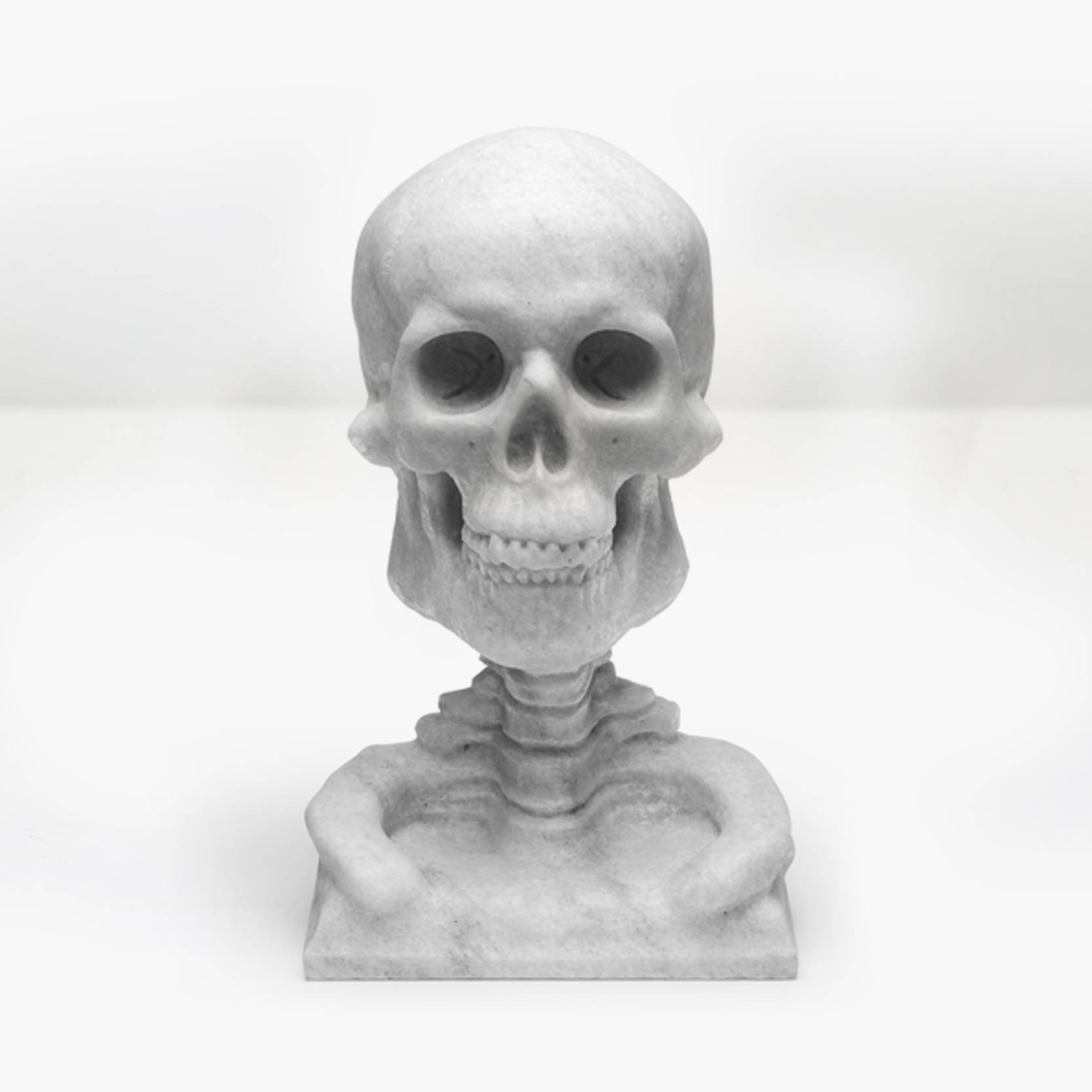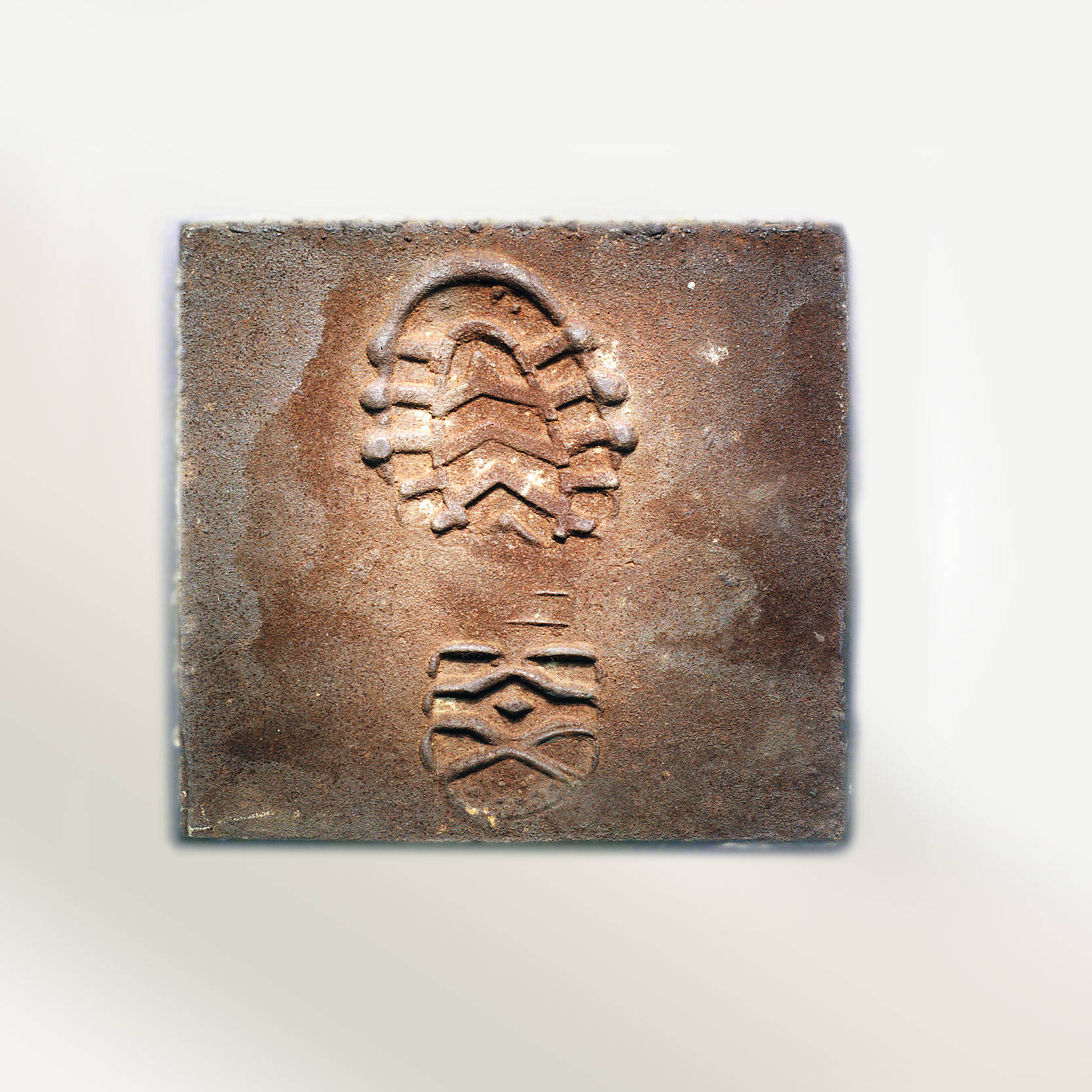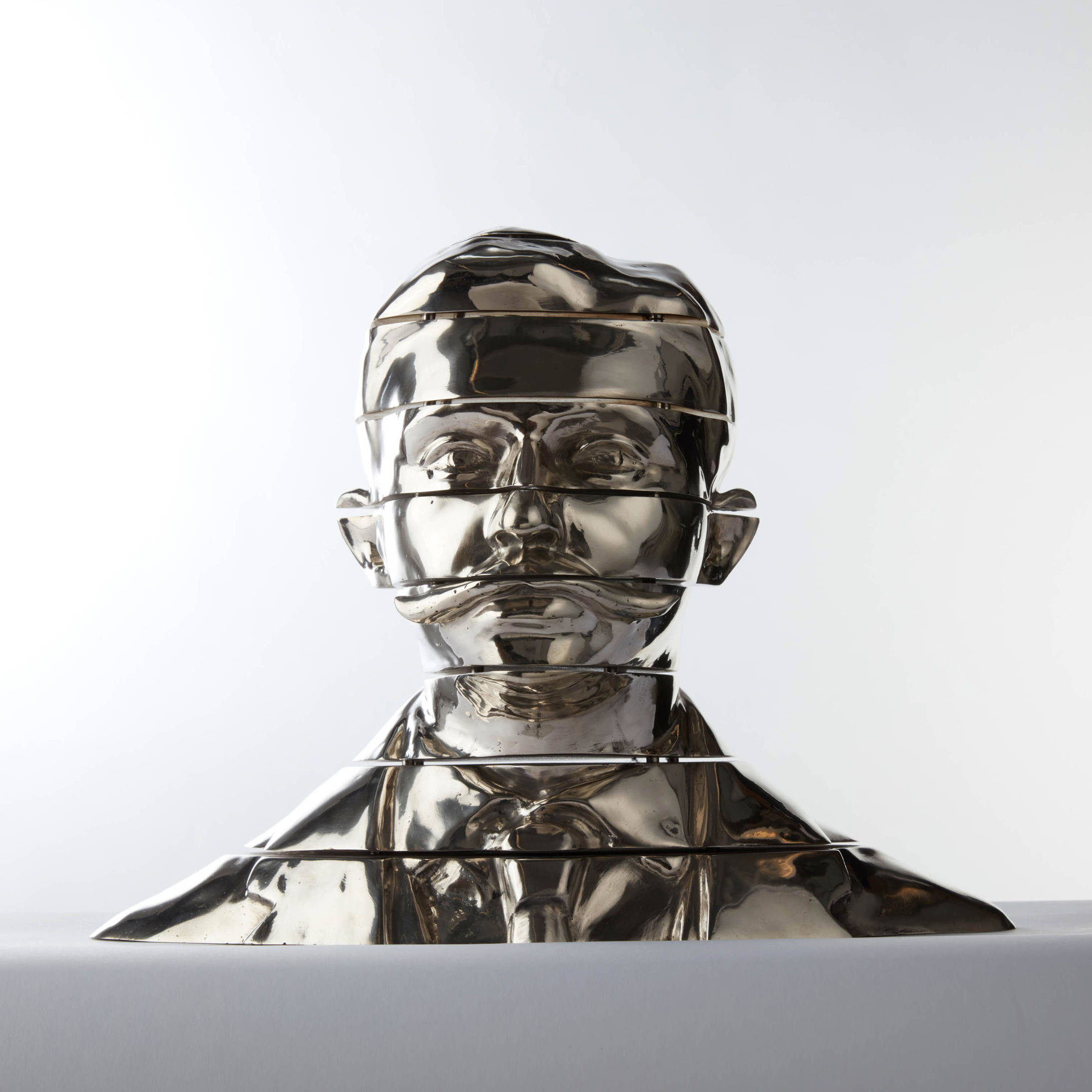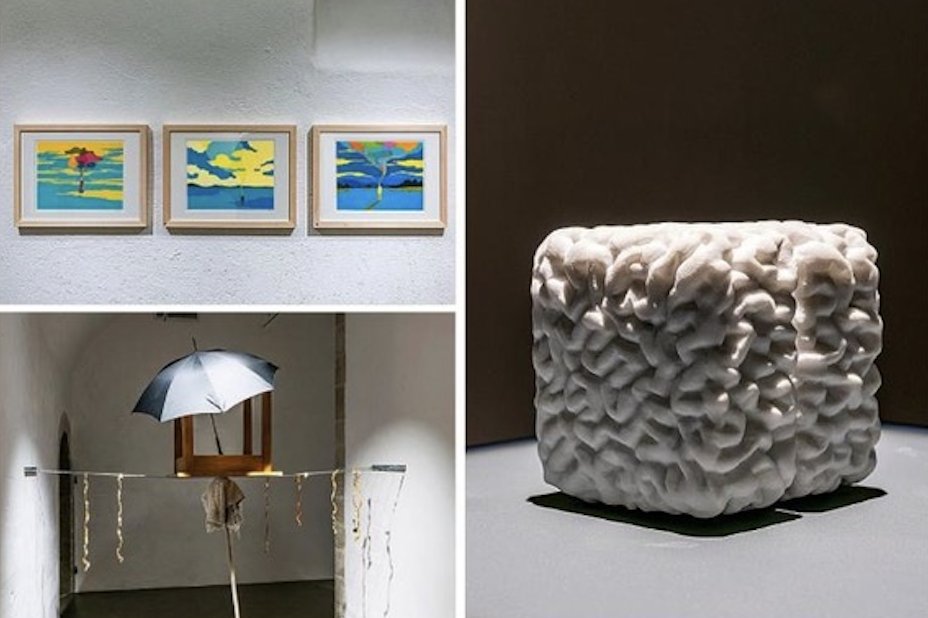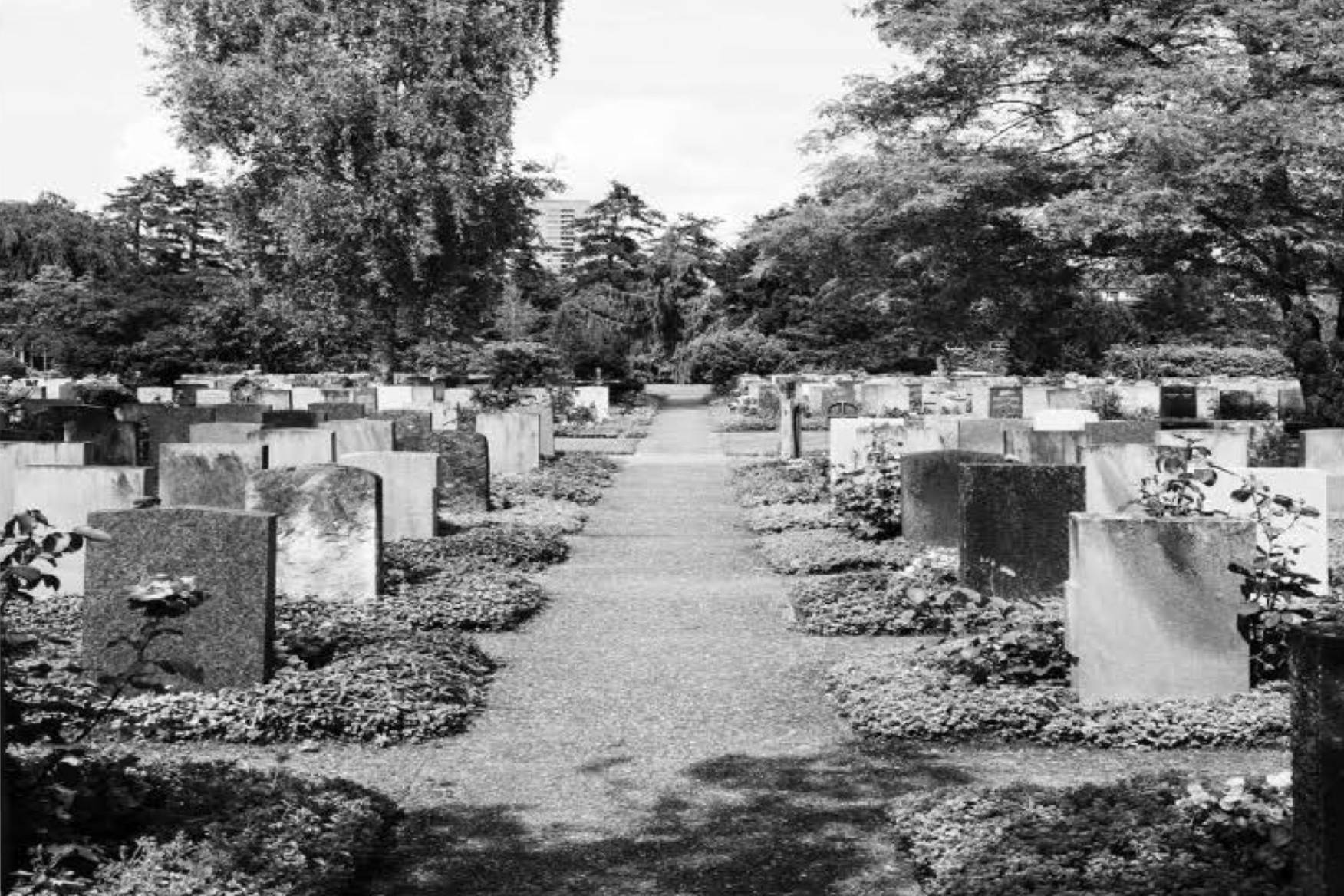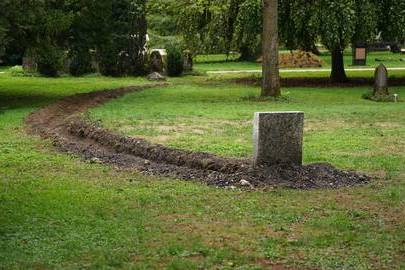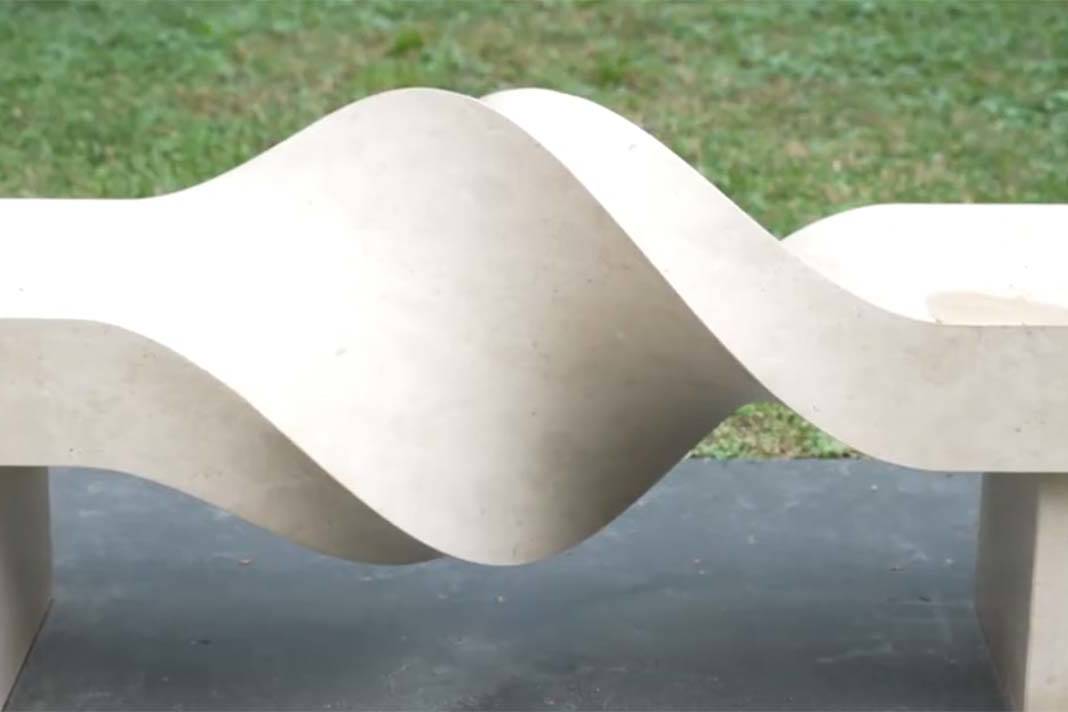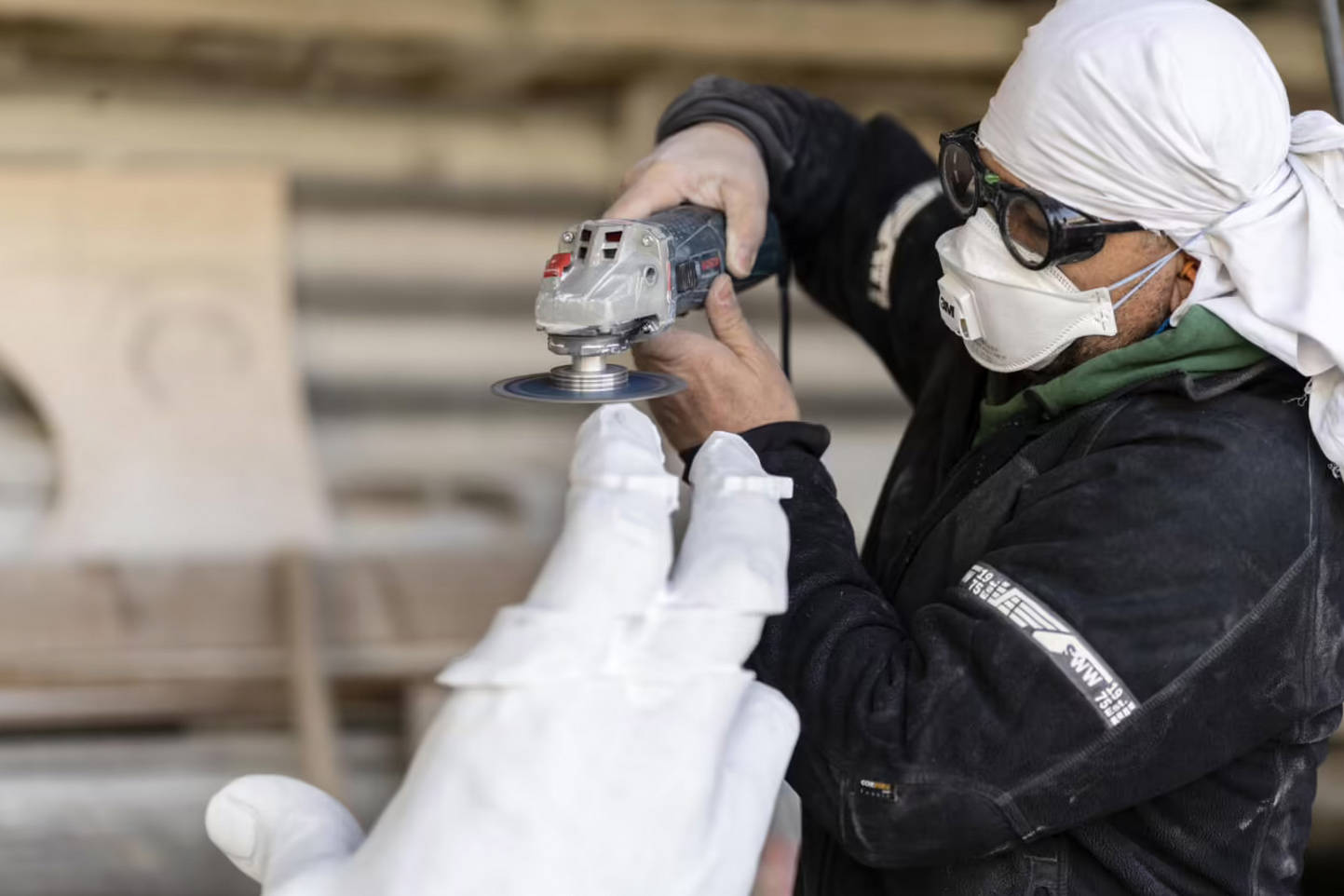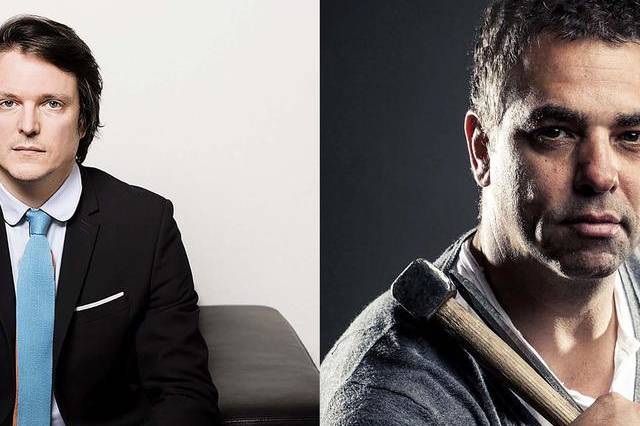Sculpture L’artiste genevois a réalisé la statue de Pierre de Coubertin à la Maison olympique
Réconcilier la main et la tête, marier d’ancestraux savoir-faire avec la pratique contemporaine, mettre en conversation les univers concrets et numériques: tout est affaire de carrefours chez Vincent Du Bois. Le visiteur peut en faire le constat dès qu’il franchit la grille de son royaume de pierres sis au chemin du cimetière à Lancy, en face du paysage de tombes et de verdure de Saint-Georges. Sur le sentier qui mène à l’atelier du sculpteur genevois, des empilements de dalles mortuaires côtoient d’augustes figures de marbre blanc ou des installations aux miroirs et métaux résolument actuels. De ce joyeux désordre minéral qui fut autrefois le quotidien de l’entreprise familiale de taille et sculpture sur pierre, l’artiste a fait son territoire.
C’est probablement son étonnante capacité à tricoter des liens entre les formes, les techniques et les siècles, sans se préoccuper d’aucun dogme, qui a valu à Vincent Du Bois d’être choisi pour réaliser la statue du baron Pierre de Coubertin. Le Comité international olympique (CIO) souhaitait ainsi marquer le 125e anniversaire de sa création. Haut de 1,74mètre, le portrait du fondateur de l’olympisme moderne trône dans la nouvelle Maison olympique, inaugurée en juin dernier à Lausanne.
La valeur du geste créatif
Pour ce projet, le lauréat du concours a débuté par une exécution fort traditionnelle: modeler le personnage en terre, d’après des photos d’époque. Alors que beaucoup de statuaires contemporains ont abandonné le façonnage des matériaux au profit du scanner numérique, Vincent Du Bois défend obstinément la valeur du geste créatif. «L’idée doit se travailler dans la matière. Depuis toujours, nos cultures occidentales ont instauré une hiérarchie entre la main et la tête qui fait qu’on se distancie du savoir-faire. Et la force du numérique vient souvent renforcer ce phénomène.» Le sculpteur a cherché à dresser un «portrait psychologique» du baron, représenté dans la force de ses 40 ans. «Je trouvais intéressant de retracer le personnage dans ses intentions, à l’avant-garde dans les domaines du développement durable et de l’égalité entre les sexes et les peuples.»
Les outils digitaux n’interviennent que dans un second temps. La figure d’argile a été convertie en 3D, puis dupliquée en polystyrène avant d’être minutieusement usinée en fonderie. Développé par les Genevois de Swiss Art Edition, l’alliage de bronze et d’argent utilisé pour sa fabrication confère une grande luminosité à la sculpture, qui a été soigneusement polie. «Le spectateur s’y reflète comme dans un miroir, précise Vincent Du Bois. Cette image permet une rencontre entre le passé et le présent et indique que la permanence des idées de Pierre de Coubertin dans l’ici et maintenant prévaut sur la ressemblance de la statue avec son modèle.» En outre, cet effet étincelant fait écho à la clarté du bâtiment, conçu pour répondre aux normes internationales les plus strictes en matière de durabilité.
Le seul regret de l’artiste? Que le CIO ne l’ait pas suivi jusqu’au bout. Dans son dessein final, l’œuvre apparaissait découpée en strates. «Elle aurait été composée d’autant de vides que de pleins. L’absence physique du sujet faisait partie du concept. Plus on se serait rapproché, plus il se serait évanoui.» Une proposition vraisemblablement trop hardie aux yeux du commanditaire, qui lui a préféré une approche plus consensuelle.
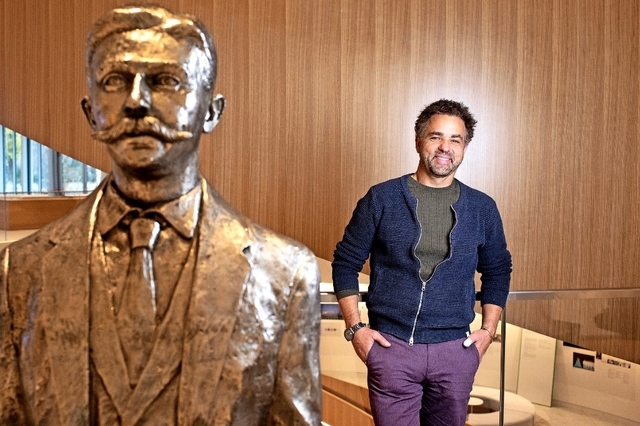
Capter la poésie du monde
Qu’importe, cette œuvre fut pour son créateur l’occasion renouvelée de faire entendre sa voix. Car il existe deux raisons pour l’art selon Du Bois. Tenter de capter la poésie du monde en «essayant de lever un coin du voile sur son mystère», d’abord; s’exprimer, ensuite, «en tant que citoyen, avec un sens critique sur la société». «Réaliser cette pièce m’a permis de défendre le savoir-faire du portrait via l’art contemporain. Et sur le papier, on ne peut que défendre la vision humaniste de Coubertin, même si elle paraît aujourd’hui soumise à caution.»
Sa voix, le sculpteur la fait résonner dans bien d’autres lieux. Dans les galeries, où il expose régulièrement, ainsi que dans l’espace public, avec de nombreuses installations – on lui doit notamment «Adam et Eve», deux pièces de marbre monumentales qui se font face sur la place du Grand-Saconnex. Celui qui a toujours, en parallèle, poursuivi son travail d’artisan, se sent aussi bien sur le toit du Musée d’art et d’histoire à restaurer d’anciennes statues qu’au cœur du dialogue entre la virtualité et le concret au Centre interfacultaire en sciences affectives de l’Université de Genève, avec lequel il a un contrat d’«artist in lab». En 2016, on l’a vu dans le cimetière des Rois, en pilote de l’exposition «Open End», soutenue par la Ville de Genève et réunissant 16 artistes – un deuxième volet est en préparation, qui commencera par un atelier à la HEAD sur l’immortalité et le cimetière de demain, au mois de février prochain. Vouant une fidélité indéfectible à sa première passion, le dessin, Vincent Du Bois semble prendre plaisir à ne pas céder à toutes les modes. La meilleure façon, sans doute, de s’offrir la liberté.
Autres articles de presse
Mortel ennui
20 Juil 2023
Au cimetière des Rois
9 Oct 2022
Cult – open end
1 Oct 2022
De mémoire de pierre
27 Août 2022
Pourrons-nous bientôt dépasser la mort?
24 Nov 2021
Marre du politiquement correct !?
31 Mar 2021
15 artisants qui font la Suisse romande
7 Jan 2021

